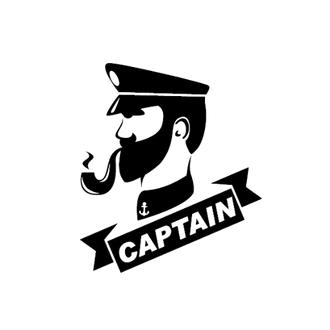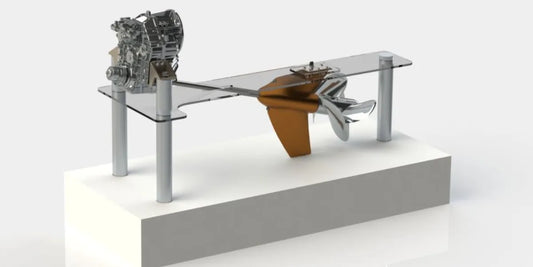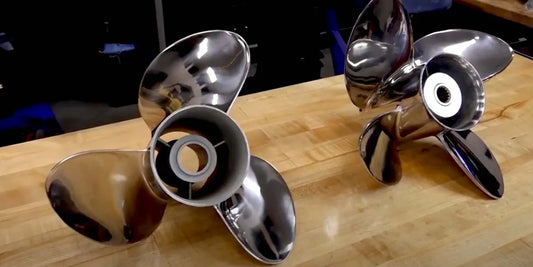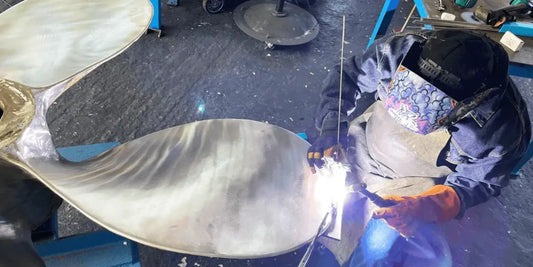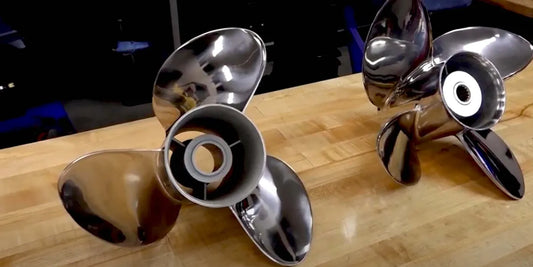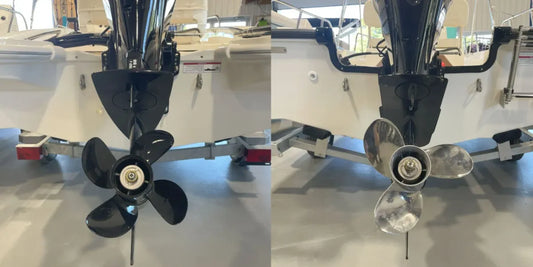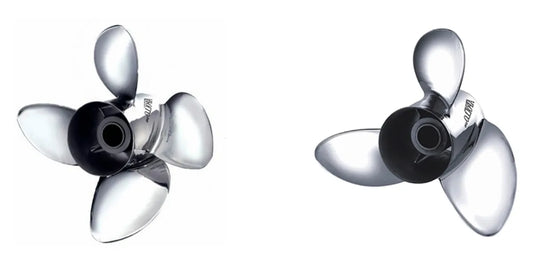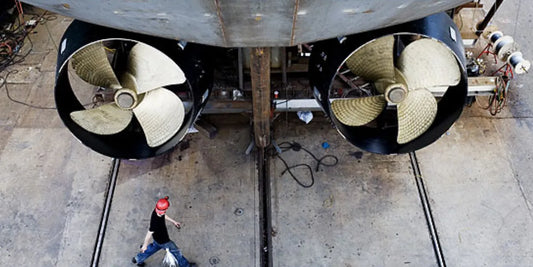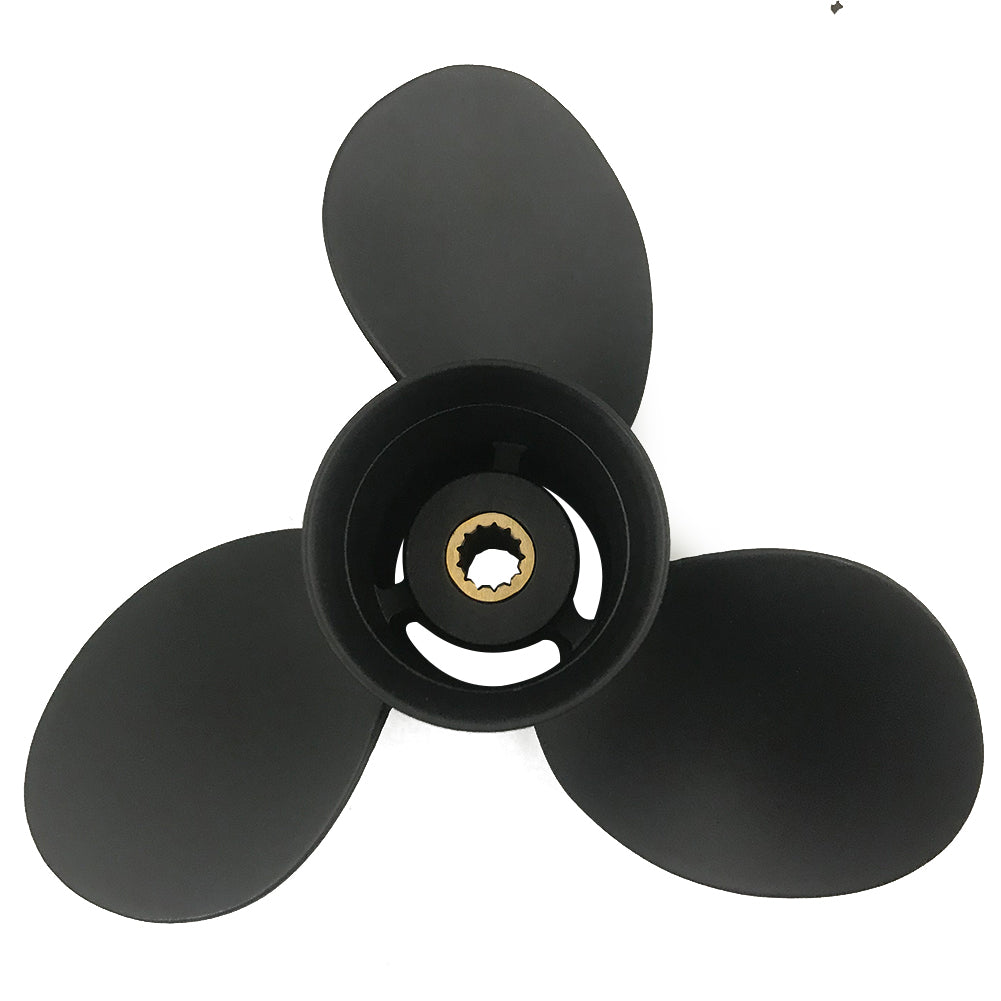Given all the components and hardware, every item is essential in marine vessel performance; however, the often-neglected boat propeller occupies pride of place, so to speak. Acting as a kind of engine, the propeller propels vessels through the water with speed, efficiency, and capacity to navigate or whatever other fancy terms there might be. Most boat owners and operators overlook the propeller in their selection and maintenance considerations. This article will explain the importance of propellers in maximizing performance, exploring how their design, construction materials, and maintenance practices impact the vessel's efficiency. From there, mariners will know the basic ingredients to harnessing the best that their boat has to offer, such that all their adventures will go on smoothly and efficiently.
Understanding Boat Propellers

What is meant by a Boat Propeller?
A boat propeller is a powerful mechanical apparatus that imparts thrust, thereby propelling the vessel through the water. The mechanism consists of a central hub with blades extending around it, which are curved in the proper direction and angle for the most efficient movement possible. When the engine imparts power to the propeller, the rotation of the blades pushes against the water with force, causing the vessel to move forward or backward.
Propellers are made out of aluminium, stainless steel, and composite materials, thus having their specific advantages in each case. The aluminium ones are lightweight and inexpensive, whereas the stainless steel types can last longer and are considered superior in performance. On top of that, design parameters such as the number of blades, pitch (note: the distance a propeller would move in one rotation through a soft solid, assuming there was no slippage), and diameter all factor into how fast a boat will go, how economical it will be on fuel, and how well it will handle.
Knowing how these elements interact allows boaters to select the proper propeller for their particular needs, which could be oriented towards speed, fuel economy, or maneuverability.
Types of Propellers: Outboard vs. Inboard
Outboard and inboard propellers are designed and intended for different boating experiences. Outboard propellers are usually part of an external engine mounted on the transom of the boat. These are favored because they are easy to maintain and versatile in their use on somewhat smaller recreational or fishing boats. The outboard system allows the operator to tilt the engine, reducing drag when an underwater obstacle is encountered, thereby enhancing performance in shallow waters. Manufacturers offer a range of blade designs and sizes, allowing boaters to optimize their propellers for speed or fuel efficiency. Combine this with the advent of ultra-light aluminium and stainless steel materials, and you have sickeningly brilliant fuel economy, plus terrific vibration characteristics through modern outboard propellers.
Inboard propellers are installed inside the vessel's hull. They are mostly employed on larger vessels, such as cruise ships and yachts. Nowadays, these types of propellers are the most common, as they are used with diesel or gas engines that produce more torque and thrust for heavy-duty purposes. These propellers are attached to a shaft through a power source and are ideal for steady cruising over long distances and navigating rough waters. With the advent of computer-aided hydrodynamic designs, improvements in efficiency and noise reduction are considered. Performance gains and further smoother rides, as well as higher top-end speeds, are proven to be attained by inboard systems when used in conjunction with dual-propeller setups or advanced pitch control.
Upon understanding the difference between the two systems and their specific purposes, it will assist the boater in making a better choice for a propeller system suited to their boating style, so that performance and efficiency can be best appreciated.
How Propeller Design Affects Performance
The propeller design truly impacts the vessel's overall performance, as it directly influences speed, fuel efficiency, and maneuverability. The blade count determines the amount of thrust and stability generated. Therefore, the fewer the blades, the faster the ship may become, as there is less drag to overcome. Conversely, more blades provide good smoothness and stability in rough water. On the other hand, pitch, or the blade's angle of inclination, acts in quite an opposite way to variations in blade angles. Higher-pitch propellers provide speed but require more engine power, making them most suited for high-performance applications. Lower-pitch propellers offer good acceleration and are thus preferred for towing or carrying heavy loads.
The type of material used in propeller manufacturing is a crucial factor in propeller selection. From a simplistic viewpoint, aluminum is lightweight, inexpensive, and adequate for recreational use, while stainless steel is more durable and efficient under severe conditions. Meanwhile, new developments, such as cupped blades or variable pitch systems, continue to improve hydrodynamic efficiency by reducing slippage and promoting water flow. Knowing these factors can therefore help a boater choose or customize propellers that are most closely attuned to their performance requirements, allowing for maximum propeller performance and, consequently, greater time enjoyed on the water.
Choosing the Right Propeller for Your Boat

Considerations to Think On: Size and Pitch
In propeller selection for your boat, size and pitch are two essential factors that significantly impact performance and efficiency. The size, or diameter, of the propeller influences the volume of water that the propeller can move. Bigger diameter propellers have massive thrusts and are used on heavier boats or for applications requiring a lot of power at low speeds. In contrast, smaller diameter ones are used on lighter boats to reduce drag and enhance acceleration.
Okay, now picture pitch as the distance a propeller would theoretically travel in one rotation if it were to operate in a perfect medium with zero resistance. Lower-pitch propellers accelerate well and excel in watersports or towing, where pulling power is the primary concern. On the contrary, higher-pitched ones achieve higher top speeds and therefore find their niche in tasks that require fast cruising performance.
The perfect-size and pitch combinations represent the final stages in fine-tuning the propeller to suit the boat's weight, engine horsepower, and usage pattern. Considering these factors together makes for a smooth operation, good fuel economy, and enhanced performance on the water.
Material Options: Aluminum vs Stainless Steel
When it comes to the material of the propeller, aluminum and stainless steel offer distinct advantages in terms of performance, durability, and price. Aluminum propellers tend to be very economical and lightweight. However, this makes them ideal for the occasional user as well as in shallow waters or areas with debris, since the softer material can prevent more severe lower-unit damage if the boat collides with underwater obstructions. The downside is that aluminum may wear faster under constant operation in harsher environments.
The stainless steel propellers are paramount when strength, longevity, and performance at higher speeds are a consideration. Their rigidity allows for thinner blades, which are inclined to less drag and achieve excellent efficiency. These kinds of propellers are suitable for enthusiasts or professionals seeking ultimate performance in varying water conditions. Although quite expensive upfront, stainless steel propellers stand the test of time in terms of wear and are thus prime candidates for consideration by the heavy user.
Hence, the trade-off between price, performance, and durability is the underlying cause of the choice of material itself being ablated. How often will it be used? The fishing grounds or environments, would these be relatively harsh or soft? Expected performance from the boat; which option best fits here?
Specialty Props for Unique Applications
In specialized boating situations, certain propellers are designed to extract the best performance and efficiency. Most often, four-blade propellers are preferred for their increased thrust and improved handling of heavy loads or rough water conditions, making them ideal for water sports or cruising with extra cargo. Meanwhile, cupped propellers are designed to reduce slip and increase grip in the water, thereby potentially increasing top speed and fuel efficiency in high-performance-oriented setups.
For shallow waters where there is a chance of debris, weedless or high-rake propellers are usually recommended. These limit drag from vegetation and obstacles, thus allowing smooth driving in such environments. Variable pitch propellers, on the other hand, have recently gained popularity as the blade angle is adjustable, allowing them to be used at varying speeds and load requirements, and thus making them more efficient and adaptable.
Another factor contributing to the increased fascination with specialty props is the numerous boaters reporting improved fuel efficiency, reduced engine stress, and increased precision under specific operating conditions. When selecting a specialty prop, one should still consider factors such as engine compatibility, activities, and even local environments, so that the specialty prop will perform optimally for one's unique boating purpose.
Popular Propeller Brands and Models

Mercury Propellers: Ensuring Performance and Innovation
For decades, Mercury propellers have been famed for their cutting-edge technology, durability, and superior performance. With exact precision engineering, the project provides propellers suitable for all kinds of boat activities, from recreational cruising to speed water sports. Models like the Enertia and Fury series enhance acceleration, improve fuel economy, and offer top speed.
For example, the Mercury Enertia Propeller utilizes a special type of stainless-steel alloy that helps minimize the propeller's weight while maintaining its strength to optimize performance under varying conditions. On the other hand, the Fury series is designed for bass boats to provide an unrivaled level of top speed and handling. Furthermore, a hallmark of many models is Mercury's own X7 alloy, which affords greater resistance to wear and corrosion.
With a wide array of types and sizes, Mercury satisfies both the regular and the specialty selections of propellers to meet any boater's intent-that is, whether it is to gain utmost efficiency or attain the utmost speed.
A Leader in Marine Engine Technology-Volvo Penta
The name Volvo Penta has become synonymous with marine propulsion systems, as they constantly strived for technological perfection regarding performance. Also included in the Volvo Penta portfolio is an innovative IPS (Integrated Propulsion System) that provides all-around improvements in maneuverability and fuel efficiency through the application of forward-facing twin counter-rotating propellers and individually steerable pods. These enhancements to vessel handling, in conjunction with the minimization of fuel consumption and resultant emissions, have garnered the attention of both the environmentally conscious boater and the professional captain.
Another feature that enhances the design of Volvo Penta is its insistence on reliability and durability. In its efforts to make engines last longer, the mechanics of advanced engineering are put into play to maintain this high-performance operational attitude. For instance, with Efficient Power Technology, Volvo Penta can develop engines with high power outputs and combustion systems designed for optimal efficiency; thus, the cost of operation and pollution are significantly reduced. Additionally, their electronic vessel control system would enable the integration of engines and controls into a seamless operation, a significant factor in ensuring safety and enhancing the user experience on the boat.
A wide range of propulsion solutions is also made available by Volvo Penta to cater to the diverse needs of the marine environment, from recreational boats to commercial vessels. By placing the most significant emphasis on sustainability, highly innovative designs, and supreme functionability, recognized universally, Volvo Penta is also maintaining its position as the first choice for marine power solutions that deliver excellent power outputs while staying ahead of the rapidly changing needs of the marine industry.
Discovering the Fury and Enertia Eco Propeller
The two propellers truly represent precision engineering, designed to enhance the performance of a boat, optimize fuel consumption, and improve reliability, all for both recreational and commercial marine applications. Below are five key features and benefits:
Unmatched Fuel Efficiency: Designed for fuel reduction, the Enertia Eco propeller achieves approximately 10% better fuel efficiency than your common-purpose propellers. This will be of utmost importance for someone on a long-distance cruise, as fuel economy will not only save money but also reduce harm to Mother Earth.
Unmatched Blade Geometry: The Fury propeller is tailored in all respects to complement high-speed performance with its advanced blade geometry. This will achieve quicker acceleration, better mid-range stability, and higher top-end speed without compromising strength and performance.
Durability Enhanced Using Strong Materials: The Fury and Enertia Eco propellers utilize stainless steel construction, making them resistant to corrosion, wear, and impact damage. This sturdy choice of materials promotes reliability over the long term in demanding marine environments.
For Flexible Applications: The Fury propeller is designed for high-performance bass boats and other types of craft that require maximum speed with excellent handling. On the other hand, the Enertia Eco propeller is a more intelligent choice for somewhat larger fuel-conscious craft, providing a tailored solution to diverse boating requirements.
Reduced Engine Stress: Combining reduced drag and increased thrust as an efficient measure helps minimize engine strain, ensuring smooth operation and longer engine life. This ensures that marine operators achieve savings on maintenance and repairs in the long run.
Both propellers showcase intelligent design choices that prioritize efficiency, sustainability, and optimal performance. They are thereby excellent options from which the 21st-century boating enthusiast may select for his or her advanced propulsion needs.
Maintenance and Care for Boat Propellers

Observations and cleaning are done periodically.
Proper maintenance begins with inspecting your boat's propeller to ensure it is in optimal working condition. Inspect the blades for dents, cracks, or corrosion that can reduce efficiency. Great care should be taken with edges and surfaces, as this is where wear is inflicted by debris or impact. Checking propeller alignment periodically is wise because any imbalance may unduly stress the engine, thereby reducing fuel efficiency.
Cleaning the propeller is essential. Remove any marine growth, such as algae or barnacles, using a soft brush with an environmentally safe cleaning solution. A non-abrasive scraper can also be employed for the tougher deposits. Also, inspect the shafts for fishing lines or any debris that may entangle and damage the mechanical parts. In essence, frequent cleaning keeps your propeller at its optimum performance while preventing long-term damage.
Common Issues and Repair Solutions
A propeller may experience a common issue from damage sustained through wear or external impact. The most frequent problem is damage to the blades, including dings, bends, or cracks caused by interference with underwater debris or the seabed. Such damages cause a loss of thrust, increase fuel consumption, and generate vibrations during operations. In this regard, bends can sometimes be addressed by careful realignment performed by specialists, whereas replacement of the entire blade is considered the best solution for severely damaged ones.
Another was corrosion in saltwater environments. Corrosion progressively weakens the propeller material, resulting in compromised structural integrity and efficiency. Mitigation involves the application of suitable protective coatings and the maintenance of the anodes. If corrosion appears despite these precautions, it is repaired by cleaning the affected surfaces and applying corrosion-resistant treatments.
Cavitation is a phenomenon in which air bubbles form on the blades during operation. It may cause pits on the surface of the blade, reducing its performance. Incorrect designs of blades, improper installation procedures, and damage to the blades are significant causes of cavitation. Once detected, cavitation can be rectified by replacing or repitching the propeller in accordance with the boat's operating conditions.
Last, but not least, an imbalance caused by damaged or unevenly worn blades may generate vibrations that cause the engine to strain and lose efficiency. Proper balancing of the propellers, either through refacing or a dynamic balancing machine, will ensure a smooth operation of the propeller and reduce stress in components around it. Prevention of these issues lies in inspecting the propeller and motor, combined with proper maintenance to achieve the full capability of the propulsion system.
When to Replace Your Boat Propeller
Knowing when to replace your propeller is crucial for maintaining the overall performance and fuel efficiency of your boat. The following are the main signs to look for:
Physical Damage to Blades: Chipped, cracked, or bent blades can seriously impair the performance of a propeller. Any kind of defect causes drag, reduces thrust, and stops smooth rotation. Look over the propeller carefully for signs of wear or damage, especially if your boating activities took you through shallow areas or places full of debris.
Loss of Speed and Efficiency: If there is a sudden loss in top speed or it requires more fuel to maintain the same performance, then it may be due to your propeller. Worn-out blades, over time, and their minor imperfections make them unable to cut through water cleanly, resulting in further efficiency loss.
Too Many Vibrations: Unusual vibrations emanating from the propulsion system may result from an imbalance due to damaged or warped blades. Such vibrations not only spoil your riding comfort but also induce stress on the engine and drivetrain components.
Over- or Under-Revving of the Engine: If your engine under-revs or over-revs, you might be faced with a faulty prop or a wrongly set prop. Over-revving will place heavy loads on the motor, while under-revving will cause the propeller to generate insufficient thrust, resulting in inefficient boat movement.
Corroded or Worn Propeller Hub: The hub is the part that connects the propeller to the engine shaft. Wear and corrosion affect this critical part: When power cannot be transferred or fails suddenly, it can cause serious consequences during operation.
Upgrading to a new propeller restores the boat's performance and may provide a minor niche enhancement. Now, a propeller is an improved design and material for fuel efficiency, speed, and durability. Always consult a marine professional to select the right replacement for your boat, engine, and conditions of use. Regular maintenance, repair, or replacement will give you a much smoother and better boating experience.
Performance Enhancement Tips

Adjusting Your Propeller for Best Efficiency
A methodical approach is how I tune my propeller for optimal efficiency, ensuring my boat performs at its best. First, identify the unique characteristics of your ship, such as its weight, engine power, and typical operating conditions. Then, choose the pitch and diameter of the propeller, very vital parameters that determine speed and fuel consumption. Further performance improvement is achieved by matching propeller materials and designs with the set goals: either speed or fuel economy for long-range cruising.
Monitoring performance on the water is another must-do step in my work. If my boat tends to feel heavy off the line, or if it drums out at three-quarters speed, that's propeller hour. A few quick touch-ups, such as pitch and blade balancing, or an upgrade to a completely different style, seem to achieve well-documented improvements. Meanwhile, I stay on the lookout for wear-and-tear indicators, with those being the hazardous types of propeller damage because bent blades wreak havoc upon efficiency.
Lastly, I take regular maintenance seriously. After every trip, I inspect my prop for bits of debris, corrosion, or nicks, and I keep it nice and clean. Sometimes, I would even consult with experts or use specialized instruments to help with fine-tuning adjustments that I couldn't manage on my own. These steps have helped tremendously in keeping the boat running at its best, resulting in some really lovely, smooth, and efficient rides on the water.
Impact of Propeller on Fuel Consumption
I would say that fuel consumption depends on the propeller, from my experience. To give an engine the proper RPMs for fuel efficiency, the togetherness between the propeller and motor must be perfect. If a propeller is oversized or undersized, it forces the engine to work harder, consuming more fuel and ultimately leading to damage. Hence, through my choice of propeller, I have been able to balance power, speed, and economy.
One more thing is the condition of the propeller. Damage such as bent blades, cracks, and severe wear creates drag, which in turn decreases performance and increases fuel consumption. For this reason, I consider the inspection and maintenance of my propeller of utmost priority. A very smoothly polished and well-maintained propeller has less resistance gliding through water, resulting in obvious fuel savings on long trips.
Lastly, I have observed that minute adjustments to the propeller pitch were worthy of significant consideration. Testing various configurations will help me optimize the boat's fuel efficiency without compromising its overall performance. Hence, minor gains are inescapably desirable because of fuel savings and bring about the delights of eco-boating.
Can Props Help Water Sports Be More Fun?
Having the right prop will always enhance any water sport; better performance equals better efficiency. In my experience, going for a prop dedicated to acceleration has been a game-changer for wakeboarding and waterskiing. Lower pitch props allow the boat to build up enough RPM fast enough for a smooth, powerful takeoff, which finishes nicely in pulling riders out of the water. This is equally beneficial for the participants and also makes the operator's job significantly easier.
Additionally, I have noticed that stainless steel propellers are better in terms of responsiveness and durability compared to aluminum ones. Due to their stiffness, these props provide a consistently stable performance in harsh conditions, making them ideal for high-speed activities such as tubing or wake surfing. Aside from the material itself, other considerations in blade design, such as using a three-blade versus a four-blade propeller, helped me balance speed or control depending on the activity at hand.
In the end, they had to be altered to add a little more power or control to the boat during rapid maneuvers or sharp turns, making it safer and more precise. Considering how the prop relates to your boat's weight and engine power in real-world terms will help enhance the overall experience, making water sports much more enjoyable for everyone. You can find a perfect compromise between speed, control, and efficiency for your own needs with the right propeller setting.
Reference Sources
-
Propeller Basics and How They Affect Boat Performance - Discusses the significance of selecting the right propeller pitch for optimizing performance and fuel efficiency.
-
The Critical Role of Propeller Efficiency and Tuning - Explores how propeller efficiency and tuning are essential for maritime operations, especially for long voyages.
-
Marine Propellers - A detailed academic resource on how propellers generate thrust and their role in achieving design speed.
-
5 Best Practices for Marine Propeller Design - Highlights the impact of blade design on drag, water movement, and overall vessel performance.
-
Looking to Improve Your Propeller Efficiency? 8 Top Tips - Offers practical tips for improving propeller and hull efficiency to enhance marine performance.
Frequently Asked Questions (FAQs)
What benefits do stainless steel propellers bring to my boat?
Stainless steel propellers provide improved durability and performance when compared to aluminum. They will improve acceleration, fuel efficiency, and handling, especially at high speeds. A stainless steel propeller could be designed to reduce vibration and improve propulsive efficiency. For those seeking a premium ride, stainless steel is typically the preferred choice, especially for outboards and sterndrives. They are also considered more durable than their aluminum counterparts and are thus likely a worthwhile investment in the marine industry.
How does the number of blades affect boat performance?
The number of blades on the propeller has a significant impact on the boat's performance characteristics. A 3-blade propeller typically allows for excellent top-end speed, whereas a 4-blade propeller facilitates good acceleration and improved handling during turns. In this regard, for a good hole shot and stability at lower speeds, a 4-blade aluminum or stainless steel propeller might be just what one needs. Powertech and Solas offer a range of options that cater to various boating styles. Choosing the right blade count is a big factor in the overall boating experience and efficiency.
How is a performance propeller different from a regular propeller?
High-performance props are designed for applications such as racing or the heavy-duty side, whereas regular props are suited for everyday, water-related applications. High-performance blades often feature specialized designs to maximize speed and handling, as seen in the Bravo series or the Fury series. They could also be made with a square hub or a specific bore size to fit perfectly. For a boat person seeking acceleration and fuel economy, purchasing a high-performance propeller can significantly enhance the overall experience.
What is a suitable propeller for my outboard engine?
There are several key elements to consider when selecting the right outboard propeller, including the engine horsepower, the boat's weight, and the intended use. Proper selection intends that the pitch and diameter of a propeller should be commensurate with the particular engine specifications to allow it to provide good service. For example, Yamaha outboards may require some configurations that differ from those of Mercury engines. Having a hub kit will help ensure your prop has a good fit and function. Consult with propeller manufacturers or experts to ensure you find the perfect match for your boating needs.
Maintenance needed for boat propellers?
One of the propeller care requirements is continuous maintenance. Inspect the prop for any damage, such as dents or corrosion, especially if it is made of aluminum or stainless steel. Clean the prop after every outing as marine growth and debris can accumulate and interfere with handling and efficiency. Also, check the hub system; all hardware is tight, and nothing is worn out. If you perform all this maintenance, you may enjoy more years of life for your prop and better boating experiences.
Is a propeller designed for one brand suitable for use with a different outboard?
An existing prop used for one brand can be used for another outboard, provided due diligence is given to compatibility. Different manufacturers have their own hub designs and specifications, which can compromise performance. For instance, a Bravo three propeller designed for a particular engine may not perform well if it is installed on a different model without further adjustment. Bore size and hub system should always be checked before installation, just to ensure they fit perfectly. Discussing it with a marine professional or the manufacturer will undoubtedly help you make the right choice for your setup.
